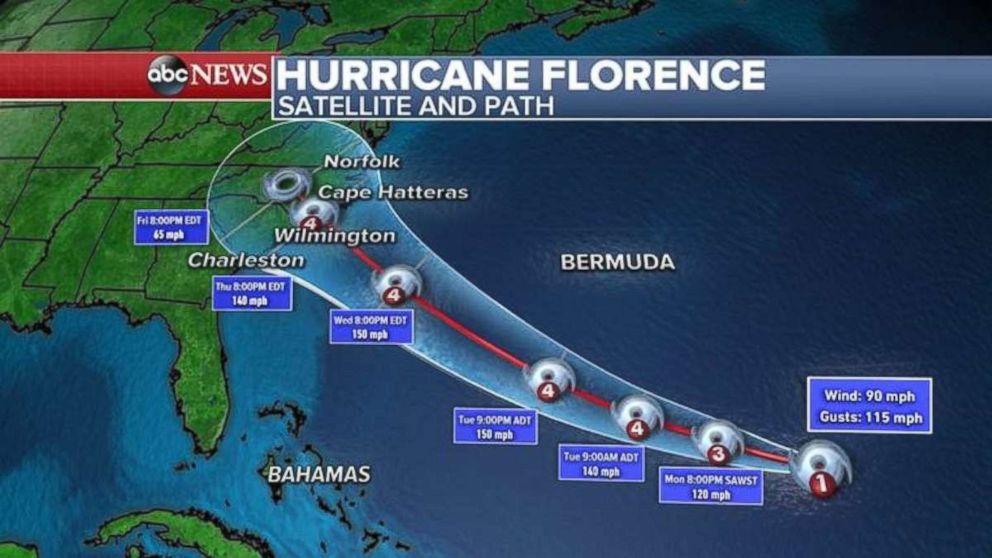
On September 10 and 11, the states of North Carolina, South Carolina, and Virginia issued mandatory evacuation orders for some of their coastal communities, predicting that emergency personnel would be unable to reach people there once the storm arrived. With the threat of a major impact in the Southeastern and Mid-Atlantic United States becoming evident by September 7, the governors of North Carolina, South Carolina, Virginia, Georgia, and Maryland, and the mayor of Washington, D.C. Florence degenerated into a post-tropical cyclone over West Virginia on September 17 and was absorbed by another frontal storm two days later.Įarly in the storm's history, the system brought squalls to the Cape Verde islands, resulting in minor landslides and flooding however, overall effects remained negligible. Early on September 14, Florence made landfall in the United States just south of Wrightsville Beach, North Carolina as a Category 1 hurricane, and weakened further as it slowly moved inland under the influence of weak steering currents. An unexpected eyewall replacement cycle and decreasing oceanic heat content caused a steady weakening trend however, the storm grew in size at the same time. Florence reached peak intensity on September 11, with 1-minute winds of 150 mph (240 km/h) and a minimum central pressure of 937 mbar (27.7 inHg). Shifting steering currents led to a westward turn into a more suitable environment as a result, Florence reintensified to hurricane strength on September 9 and major hurricane status by the following day. Strong wind shear then led to rapid weakening, and Florence weakened to tropical storm strength on September 7. An unexpected bout of rapid intensification ensued on September 4–5, culminating with Florence becoming a Category 4 major hurricane on the Saffir–Simpson scale (SSHWS), with estimated maximum sustained winds of 130 mph (215 km/h).

Progressing along a steady west-northwest trajectory, the system gradually strengthened, acquiring tropical storm strength on September 1.
The wave steadily organized, and strengthened into a tropical depression on the next day near Cape Verde. The sixth named storm, third hurricane, and the first major hurricane of the 2018 Atlantic hurricane season, Florence originated from a strong tropical wave that emerged off the west coast of Africa on August 30, 2018. Hurricane Florence was a powerful and long-lived Cape Verde hurricane that caused catastrophic damage in the Carolinas in September 2018, primarily as a result of freshwater flooding due to torrential rain. Part of the 2018 Atlantic hurricane season West Africa, Cape Verde, Bermuda, East Coast of the United States (especially the Carolinas), Atlantic Canada The above information was shared by Robby Deming.Hurricane Florence near peak intensity south of Bermuda on September 11 We’ll keep watching for flash flood warnings and storm surge services we can add. In addition to the filtered version of the precip forecast, this also shows stream gauges and the locations of nuclear power plants (blue circles with light bulbs). Hurricane Florence Flooding – This is pretty bare right now since we don’t have any floods yet. Forecast precip for next 7 days (filtered to areas expecting 5+ inches of rain)

It includes the following data:įorecast Precipitation Impact Summary - This app utilizes National Weather Service’s 7-day forecast precipitation for a more precise measure of the places likely to be significantly impacted. This app will be useful for the next 72 hours until the storm makes landfall. Weather stations showing wind speed in excess of 62 km/h (these will start lighting up as the storm gets closer to land)Įrror Cone Impact Summary - This app geo-enriches the cone of uncertainty to report on the number of people potentially impacted by Florence.


 0 kommentar(er)
0 kommentar(er)
